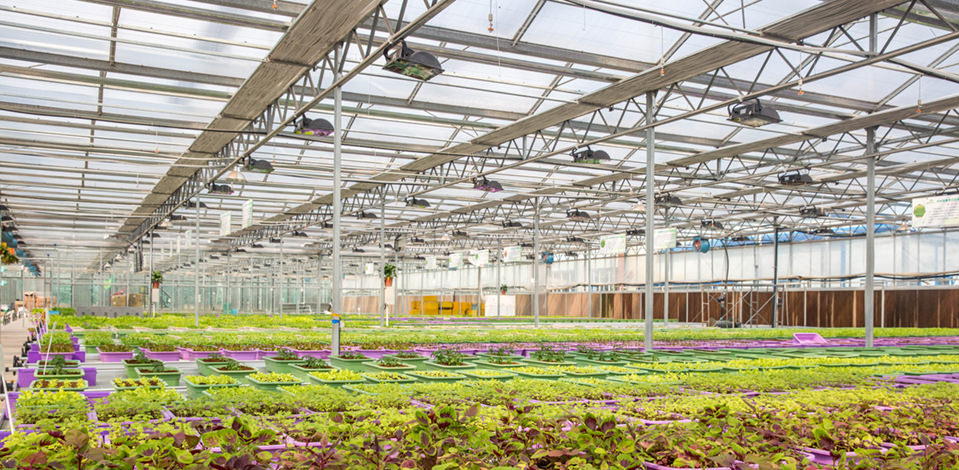On the basis of technology used
a. Hi-Tech Greenhouse/ Fully environmental controlled green house
- Refers to an advanced greenhouse equipped with climate control systems for precise regulation of temperature, humidity, CO₂, and light.
- It mainly has Computer-controlled ventilation, heating, cooling, and irrigation and has sensors, misting systems, and fertigation.
- Example Crops: Tomatoes, capsicum, cucumber, exotic flowers, and strawberry.
- High walls (>4m), roof peak being up to 8 m; frame is iron or aluminum material.
- Roof ventilation and may also have side wall vents.
- Roof: Plastic film (Single or double), polycarbonate sheeting or glass.
- Use of pesticides significantly reduced.
- Capital intensive but highly productive.

Advantages:
- Maximum control over crop environment.
- Suitable for high-value crops requiring precise conditions.
- Enables year-round production and export-quality produce.
Limitations:
- Very high investment cost.
- Requires technical expertise and continuous monitoring.
b. Semi Hi-Tech Greenhouse
- Refers to partially automated greenhouse with limited environmental control.
- It may include simple ventilation, shade netting, or drip irrigation and is less expensive than hi-tech greenhouses.
- Example Crops: Tomato, cucumber, capsicum, marigold, gerbera.
- Medium walls (2-4 m), roof or side wall ventilation or both.
- Single or double skin plastic film, polycarbonate or glass.
- Varying degrees of automation by using sensors, thermostat, fan and pad, etc.
- Offer a compromise between cost and productivity and is more efficient than field production.

Advantages:
- Suitable for small-scale farmers.
- Moderate control over crop environment.
- Lower investment and operational cost.
Limitations:
- Cannot completely control extreme temperatures or humidity.
- Limited to certain crops and seasons.
c. Low tech greenhouse
- Less than 3 meters in total height and usually don’t have vertical walls.
- Poor ventilation and inexpensive and easy construction.
- Little or no automation is used (mist) and no sensors are used.
- Cost effective, more production than open field, disease and insect control.
